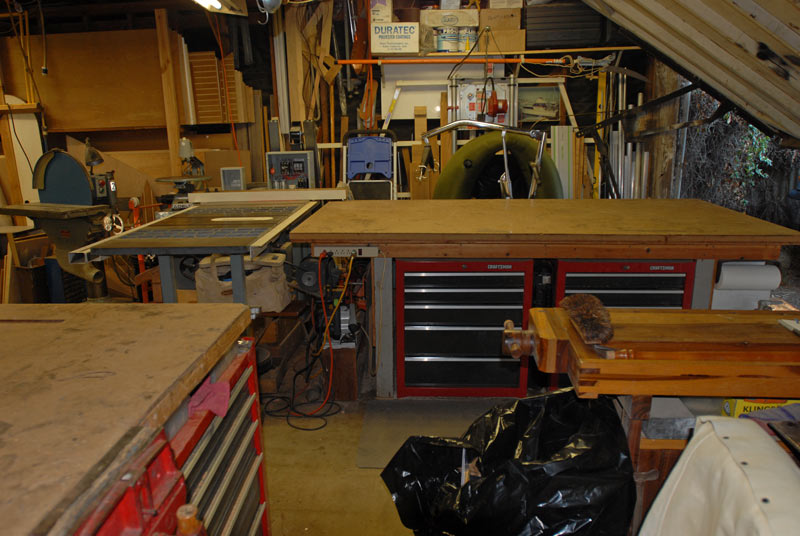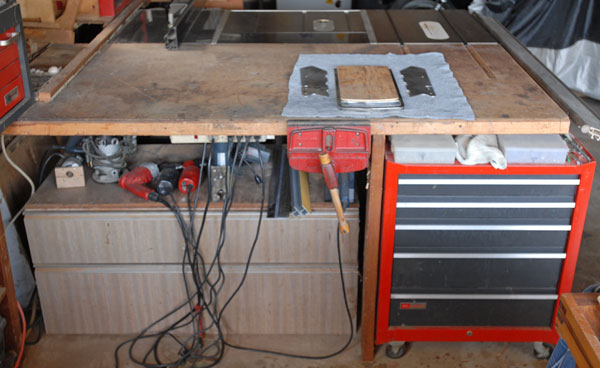Beeen raining for the last 7 days so I've been spending more time on Youtube than in the shop. I have noticed (and watched) a lot of videos where people seem to be building combination out feed and assembly tables. Some are pretty elaborate with storage, routing capabilities, downdraft areas and one even had air compressor and shop vac hookups. All this makes for a heavy assembly table.
So my question: do any of you have an assembly table instead of a traditional workbench? Is anyone planning on going in that direction? Pros and Cons?
Seems for a shop with limited space a multipurpose assembly table would make the most sense.
Waiting to hear your thoughts.





 Reply With Quote
Reply With Quote

 What I think is really important to try and accomodate is having multiple heights available for assembly work so you can choose the best height for the project...and your back...to do the work.
What I think is really important to try and accomodate is having multiple heights available for assembly work so you can choose the best height for the project...and your back...to do the work.








